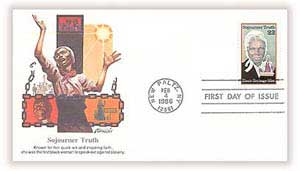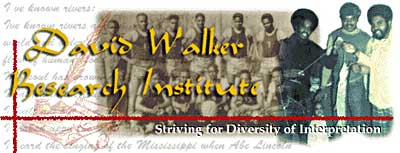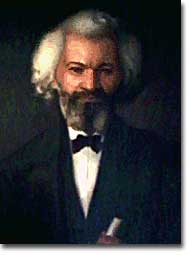28b. African-American Abolitionists

The abolition of slavery was the cause of free African-Americans.
Once the colonization effort was defeated, free African-Americans in the North became more active in the fight against slavery. They worked with white abolitionists like William Lloyd Garrison and Wendell Phillips to spread the word. They developed publications and contributed money. Many, such as Robert Purvis, dedicated their lives to freeing individual slaves from bondage. Although many pledged their lives to the cause, three African-American abolitionists surpassed others in impact. They were David Walker, Frederick Douglass, and Sojourner Truth.
While Garrison is considered the prime organizer of the abolitionist movement, David Walker published his Appeal two years before The Liberator. In 1829, Walker declared slavery a malignancy, calling for its immediate termination. He cited the four evils causing the greatest harm to African Americans as slavery, ignorance, Christianity, and colonization. Even white abolitionists decried the violent nature of his text. In the South, an award was raised for his capture, and nine months after publishing his Appeal he died mysteriously. Walker originated radical abolitionism.

The David Walker Institute, named for the author of An Appeal to the Coloured Citizens of the World, studies health issues that affect African Americans today.
The best known African American abolitionist was Frederick Douglass. Douglass escaped from slavery when he was 21 and moved to Massachusetts. As a former house servant, Douglass was able to read and write. In 1841, he began to speak to crowds about what it was like to be enslaved. His talents as an orator and writer led people to question whether or not he had actually been born a slave.

At the beginning of his career as a speaker, some doubted Frederick Douglass's claim that he had escaped from slavery. His eloquence and the fact that he would not reveal his given name (for fear that he would be captured and returned to his master) caused people to believe that Douglass had been born a free man.
All this attention put him at great risk. Fearful that his master would claim him and return him to bondage, Douglass went to England, where he continued to fight for the cause. A group of abolitionists eventually bought his freedom and he was allowed to return to the United States. He began publishing an anti-slavery newspaper known as the North Star. Douglass served as an example to all who doubted the ability of African Americans to function as free citizens.
Sojourner Truth was born into slavery in New York, but was freed when the state outlawed the practice in 1827. She was born Isabella Baumfree, but changed her name because she believed God wanted her to travel about the country and spread the word. Truth was one of the best known abolitionists, renowned for her stirring oratory. Also concerned with women's rights, she joined the campaign for female suffrage. When slavery was ended, she continued to fight for equality by protesting segregation laws.





